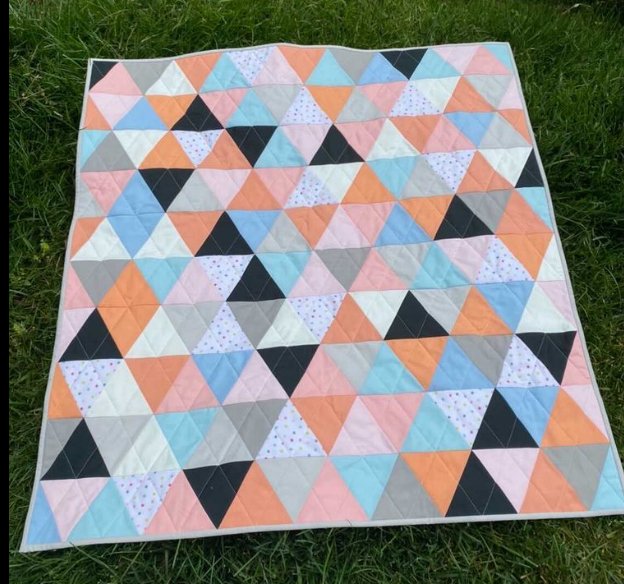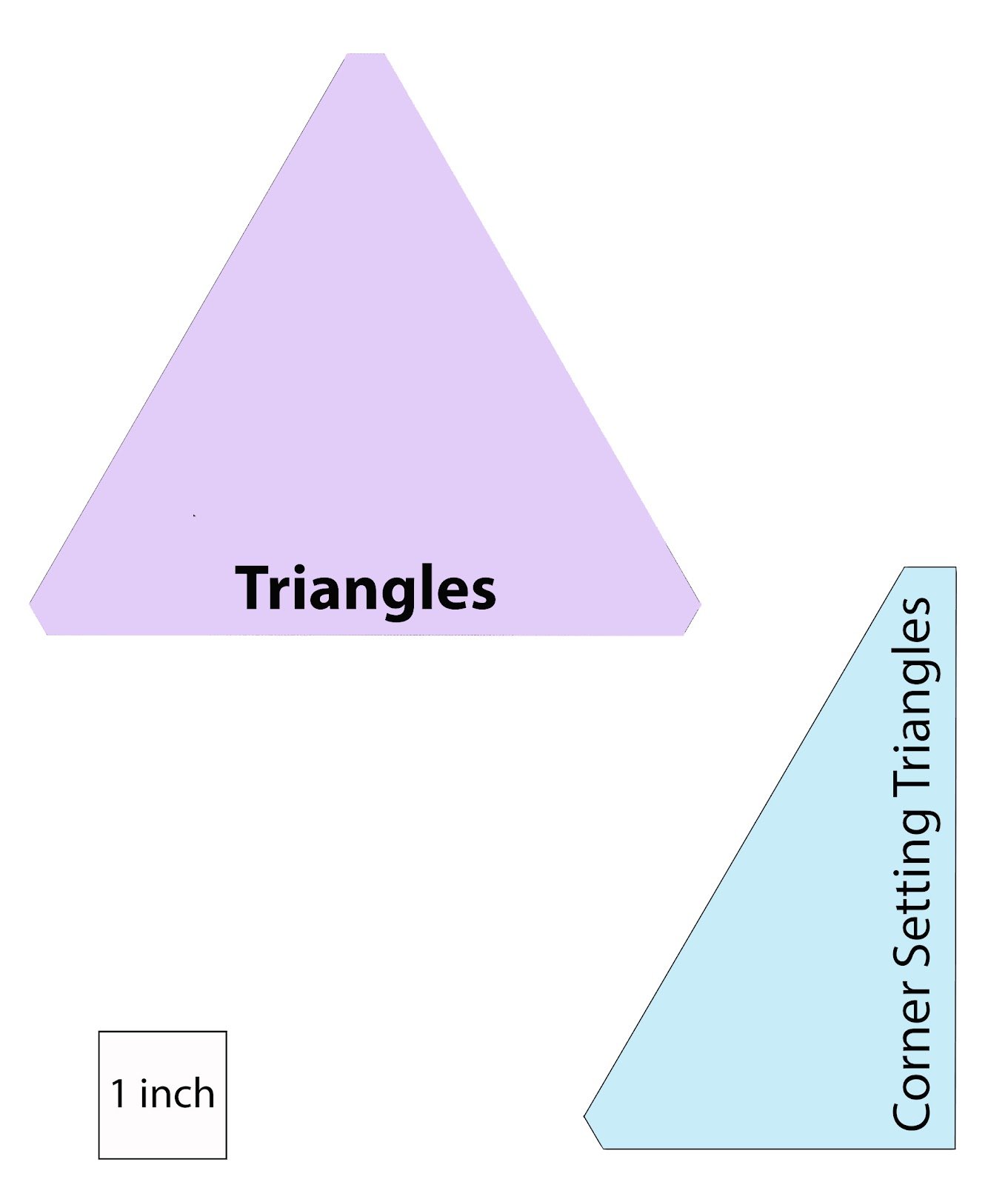Equilateral Triangles
by Anjeanette Klinder (@anjeanetteklinder)
Triangles are the gateway drug to diamonds and hexagons and from there, anything else! I love sewing triangle quilts. Today, I will discuss an equilateral triangle or 60-degree triangle. I like to start with an equilateral triangle because it is a great way to enter the world of shapes other than the squares and rectangles that you may be comfortable with.
Tools
There are a few tools that are super helpful in making equilateral triangles, including a 60-degree diamond ruler, triangle ruler and even a handy tool. I prefer to use a triangle template with the corners or dog ears cut off. It makes lining up the triangles very simple. My favorite ruler is the 60-degree Diamond Ruler from Creative Grids 60 (designed by Krista Moser). There is also a handy tool for trimming corners from Marti Michele, the Deluxe Corner Trimmer & Hand Piecing Aid. I have included a line drawing of a triangle with the dog ears cut off for this if you find that to be helpful too. The reason I prefer the dog ears to be cut off is that it takes out the guesswork when lining up the pieces correctly. When the points are intact, you must guess about the overlap before sewing your seams. I find that it can create an inconsistent quilt unless you are accurate in guessing the seam allowance. It does take an extra step to cut off the points for each triangle, but I absolutely think it helps and makes it easier later.
If you don’t have a specialty ruler and want to get started, this post from Lee Heinrich’s Freshly Pieced blog has a good overview of different ways to cut equilateral triangles.
After the basic directions, read on as I have lots of ideas on how to shake it up a little and add a bit of improv to your triangles.
Preparation
Since cutting triangles exposes bias edges, I suggest starching your fabric well before you begin cutting. The starch keeps the bias edges from stretching or distorting and makes sewing the seams easier.
Cutting
For this example, I will be cutting strips of fat quarters at 4.5 inches. I chose the 4.5-inch size because with the templates, you get all your corners cut off. If you are using another method to cut triangles I would still suggest using something to guide you in cutting the dog ears off. You can use a paper template or you can make one out of cardboard or template plastic that will be more durable. And cut those ears!!
To the left is the template.
Cutting
-

Line your ruler up with the 4 ½” marking on the middle of the ruler and the top of the flat part of the top of the ruler.
-

Make the side cuts. Without removing the ruler, gently move the fabric to the side. I am right-handed and I move the fabric right.
Make the two side cuts for the dog ears.
-

Turn the ruler 180 degrees and line the ruler up at the flat tip of the ruler and the 4 ½” marking lines on the edges of the fabric. Make the right-side cut.
-

Move the fabric away and make the two dog ear cuts. Proceed making cuts for the whole WOF.
-
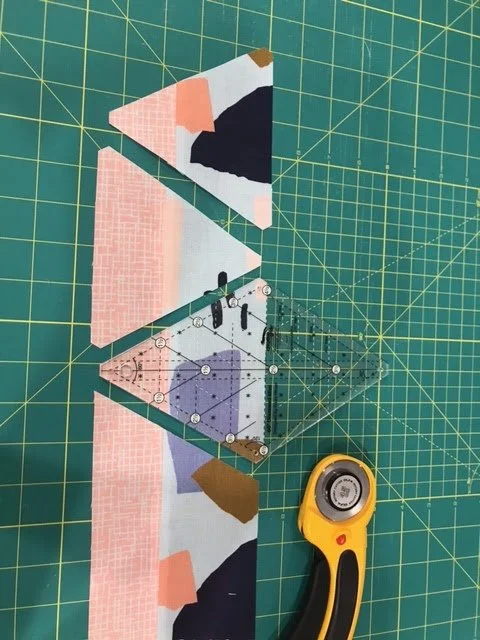
I chose to cut my fabric at 4.5” and by the 18” or shorter length of the fat quarter. This way I can get 5 triangles out of the length. At the end of the row, there is enough to make a side setting triangle. If you have this ruler, you can line it up. If not, use the template provided. This is another reason I love this ruler. It cuts all the dog ears and even gives you the side setting triangle lines so you do not have to waste fabric. Make sure you use the correct cutting lines for this.
Designing the Quilt
-

Play with the orientation of your triangles. You can create a star with the same fabric print in a star design. Consider allowing two triangles of the same print to match up occasionally to make it interesting. Have fun! You can make a pattern or be completely random, just remember that you will first be sewing triangles into rows and then sewing the rows together.
-

And here Linda lets one color create a background effect.
-

Here is one that Nancy made for our TEN show
Sewing the rows
Start by placing two triangles right sides together. Make sure they are lined up on all the sides of the triangle. I like to use a full ¼” seam. Whatever size your seams are, make sure they are consistent. Consistency for the whole side is key. Press the seams open. If this is your first time sewing triangles, it is a great idea to check that your seam allowance is ¼”. If you are off even a little now, it can carry over and make a difference in the overall quilt. Check to see that your points are ¼” from the edge. It is always good to check along the way so you can make any changes as soon as you see they are necessary. Sew all your triangles into rows. You will want to use the setting pieces at the start and end of each row.
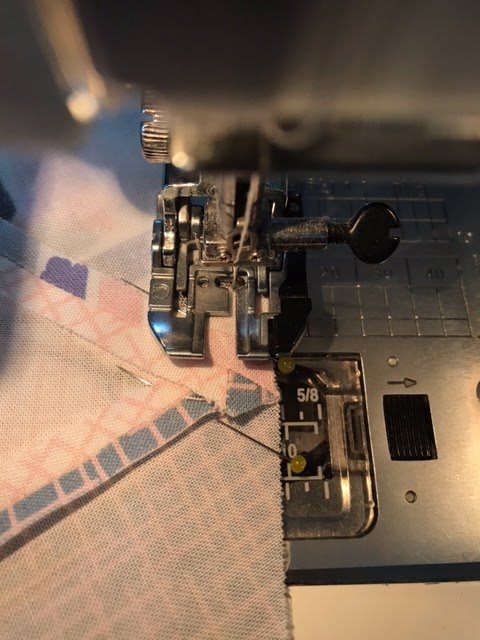
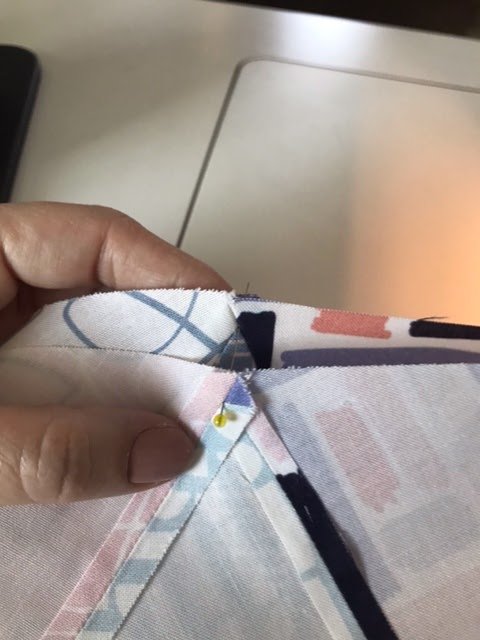
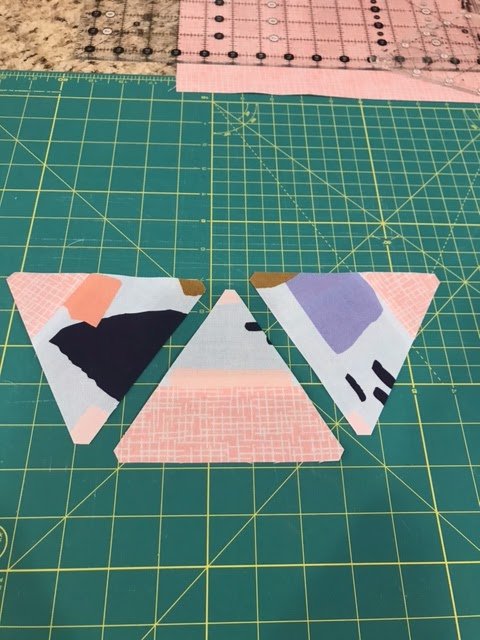
To match the rows, with right sides together, at the point of the row on top, run a pin through the first point. Match the top row with the corresponding first point from the row below it. Push the pin through the top of the point.
I have a video in my Instagram stories to help show how this is done. Seeing is sometimes easier than reading the explanation. It is important to keep that first pin straight in the two fabrics. It is just to help you align the two pieces points together. You are not pinning this first pin, just running it through the two points for alignment. Make sure the pin is perpendicular to the seam. Add a pin before that intersection and after the intersection as you would normally pin. Take out the first pin that was just holding the point alignment. Repeat for all the point intersections. Sew the row together with a ¼” seam allowance and press the seam open. ** You may want to switch to a scant seam at this point. You want to make sure you are sewing just a thread or two to the right of the point. This will keep your points from being cut off. Continue pinning and sewing until all of your rows are together.
The more accurate you are sewing the triangles into rows, the less fudging you will need now. Don’t fret if your intersections aren’t perfect. The more you sew, the more accurate you will become. Eventually, if your seams are accurate, you won’t need the alignment pin for the intersections.
Pressing matters
Press the seams open. Doing this for triangles helps reduce bulk as does trimming the dog ears. For a square, you have 4 fabrics coming together for a typical intersection. For triangles, you have 6 fabrics and there are more layers. Flatter is somehow a miracle spray. I am sure there are unicorns and miracles in there. I find that my bulky seams are helped immensely when I use a spritz of Flatter when I press.
More design options
Remember, you are not limited to triangles that are solely one solid or print fabric. Here are some ideas to add some spice to your project. Have some fun with your triangles!
1. Sew some scraps together and create a “slab” of made fabric. Use the template to cut out scrappy fabric triangles.
2. Sew some strips of fabric together and cut triangles from that. Try sewing a 3” strip and a 2” strip together, then cut out your triangles.
3. Start with a smaller wonky triangle. Sew scraps of fabric around all three sides before trimming with the triangle template.
4. Use a striped print. When laying out the triangles to sew together, change the orientation before sewing together.
5. Use strips of 4.5” to finish a row, instead of using all triangles.
6. Add a hexagon to the mix.
7. Change the orientation of your rows. Think of it as “on point” for square blocks but it is just changing the orientation of the rows.
Go forth and play!
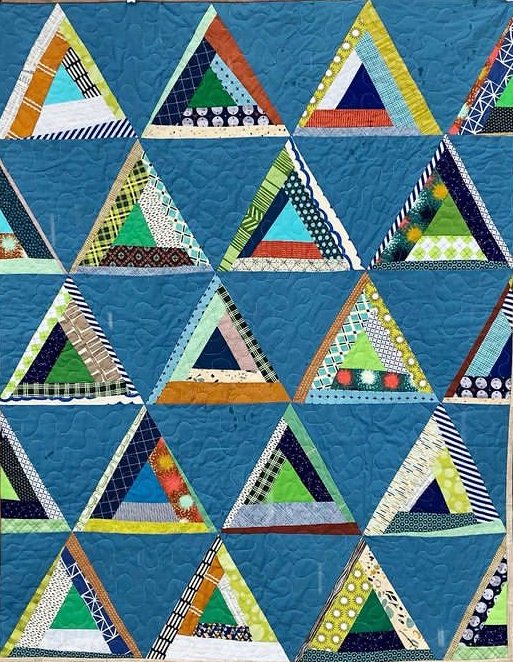
Here’s a bit of Diana’s quilt that used design option 3.
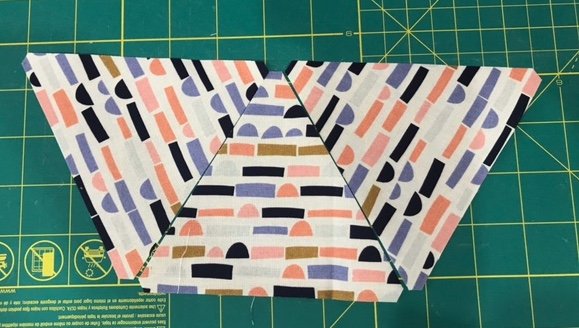
This shows design option 4. This isn’t your typical striped fabric, but you can see that it has lots of design possibilities.

